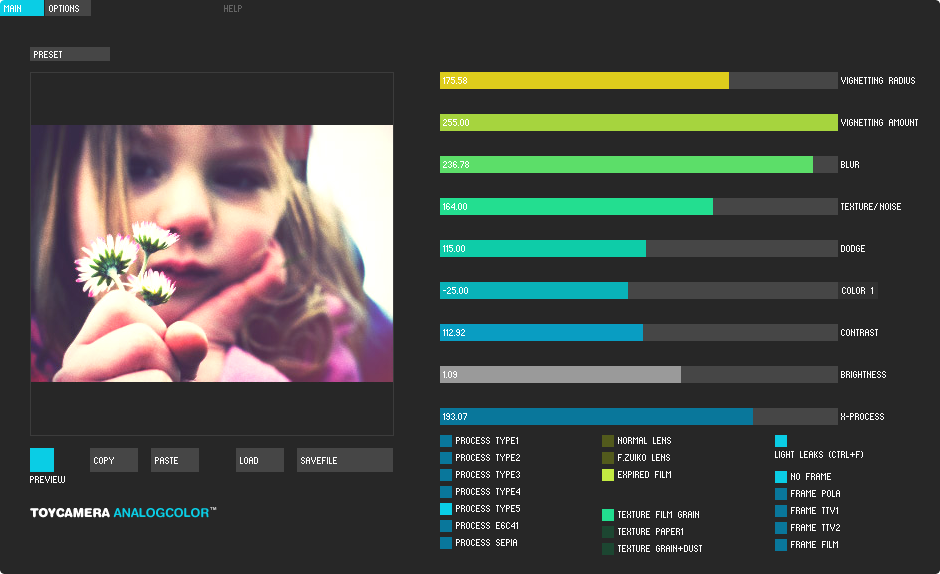Toy Camera Analog Color Keygen

Mixed Martial Arts News Results and Video on NBC.
• WW: 1996 Units sold. Contents • • • • • • • • • • • • • • • • • • • • • • • History [ ] Development [ ] The Jaguar was developed by the members of, a company formed. The team had claimed that they could not only make a console superior to the or the, but they could also be cost-effective. [ ] Impressed by their work on the, Atari persuaded them to close Flare and form a new company called, with Atari providing the funding. [ ] Flare II initially set to work designing two consoles for Atari Corp. One was a 32-bit architecture (codenamed '), and the other was a 64-bit system (codenamed 'Jaguar'); however, work on the Jaguar design progressed faster than expected, so Atari Corp. Canceled the Panther project to focus on the more promising Jaguar.
The Jaguar was unveiled in August 1993 at the Chicago Consumer Entertainment Show. Launch [ ] The Jaguar was introduced in 1993 at a price of $249.99, under a $500 million manufacturing deal with. The system was initially available only in the of and, under the slogan 'Do the Math', claiming superiority over competing 16-bit and 32-bit systems. A U.S.-wide release followed six months later, in early 1994. Wrote in January 1994 that the Jaguar was 'a great machine in search of a developer/customer base', as Atari had to 'overcome the stigma of its name (lack of marketing and customer support, as well as poor developer relations in the past)'.
The company 'ventured late into third party software support' while competing console 's '18 month public relations blitz' would result in 'an avalanche of software support', the magazine reported. Early difficulties [ ] The Atari Jaguar struggled to attain a substantial user base. In 1993, Atari reported that it had shipped 17,000 units as part of the system's initial test market. By the end of 1994, Atari reported that it had sold approximately 100,000 systems and had reduced the price to improve the competitive nature of the console. By the end of 1995, and had entered the marketplace with competing consoles and Atari's sales declined rapidly. In Atari's 1995 annual report, it noted: Jaguar sales were substantially below Atari's expectations, and Atari's business and financial results were materially adversely affected in 1995 as Atari continued to invest heavily in Jaguar game development, entered into arrangements to publish certain licensed titles and reduced the retail price for its Jaguar console unit. Atari attributes the poor performance of Jaguar to a number of factors including (i) extensive delays in development of software for the Jaguar which resulted in reduced orders due to consumer concern as to when titles for the platform would be released and how many titles would ultimately be available, and (ii) the introduction of competing products by Sega and Sony in May 1995 and September 1995, respectively.
In addition, Atari Corp. Had severely limited financial resources, and so could not create the level of marketing which has historically backed successful gaming consoles. In a 1995 interview with, then-CEO Sam Tramiel declared that the Jaguar was as powerful, if not more powerful, than the, and slightly weaker than the.

Next Generation received a deluge of letters in response to Tramiel's comments, particularly his threat to bring Sony to court for if the PlayStation entered the U.S. Market at a retail price below $300 and his remark that the small number of third party Jaguar games was good for Atari's profitability (which angered Jaguar owners who were already frustrated at how few games were coming out for the system). Technical issues [ ] The Jaguar's underlying hardware was crippled by a flaw in the CPU's, which prevented code execution out of system.
[ ] Less severe defects included a buggy. Papi papi english mp3 song download pagalworld. [ ] The memory controller flaw could have been mitigated by a mature code-development environment, to unburden the programmer from having to micromanage small chunks of code. [ ] Jaguar's development tools left much to the programmer's own implementation, as documentation was incomplete. [ ] Design specs for the console allude to the GPU or DSP being capable of acting as a CPU, leaving the Motorola 68000 to read controller inputs. Atari's Leonard Tramiel also specifically suggested that the 68000 not be used by developers.